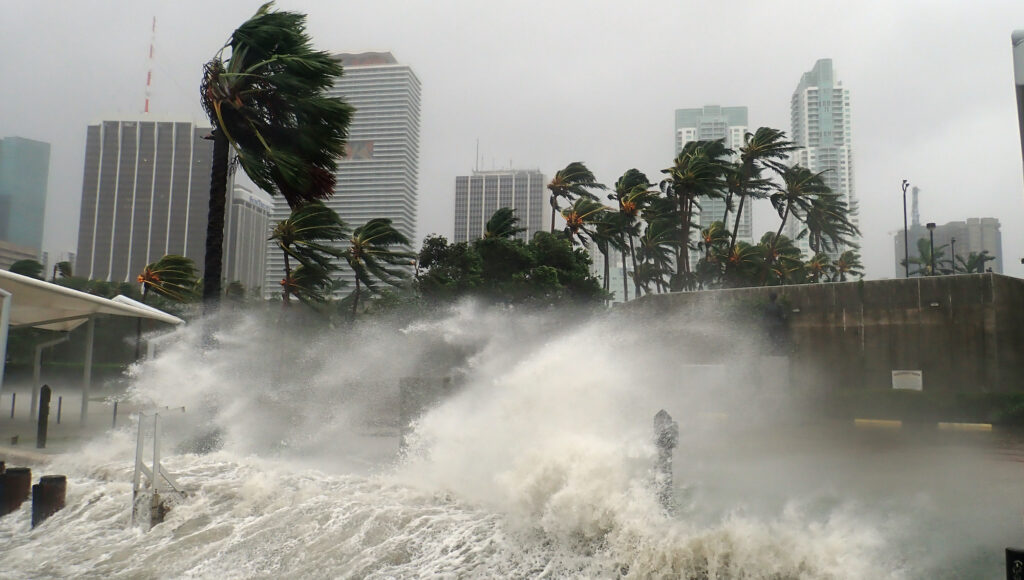
Getty Images
A record number of storms battered America’s Gulf and East coasts last year. While this year’s forecast isn’t nearly as dire, at least several large hurricanes are expected to make landfall, endangering tens of millions of U.S. homes.
More than 31 million single-family homes and nearly 1 million residential units in multifamily buildings are at moderate to significant risk of storm damage this season, according to real estate data firm CoreLogic. This could cause trillions of dollars in damage and leave scores of homeowners without flood insurance footing steep bills.
The cost of rebuilding after a disaster can be crippling, says Tom Larsen, principal of CoreLogic’s Insurance Industry Solutions.
“When you get a poorer community that gets [bad] damage, sometimes the community doesn’t come back,” says Larsen.
About 21 to 35 named storms are projected to hit the U.S. this hurricane season, which runs from June through November, according to the National Oceanic and Atmospheric Administration. Three to five of those are expected to be Category 3 and above, which can cause major damage.
Last year, there were 30 storms significant enough to be named; seven turned into major hurricanes, which are Category 3 or above. They were nurtured by above-average seawater temperatures at the surface, one of the main factors in hurricane formation, says Danny Brouillette, a research scientist at Pennsylvania State University. This year, temperatures are higher than usual, but not as much.
Still, sea levels are rising, making the storm surges worse and leading to larger waves that can flood farther inland. This means even homeowners who don’t live on the water are being affected by these storms for the first time.
About 18.37 million single-family homes are at risk of Category 3 or above storm surge, which could cause nearly $1.83 trillion in damages, according to CoreLogic. About 73.6 million single-family homes are vulnerable to moderate or higher wind damage, estimated to cost roughly $18 trillion.
Homes in the 15 largest metropolitan areas make up more than two-thirds of properties vulnerable to storm surges this season. Metros include the main city and surrounding towns, suburbs, and smaller urban areas.
This is problematic because more people are moving to the Gulf and Atlantic coasts, which is putting more residents at risk from the storms. It also means the damages from these disasters will be higher than in areas with fewer people.
“There’s increased vulnerability because more and more people are living near coastlines that are susceptible to hurricanes and tropical storms,” says Brouillette.
The metro with the most homes at risk is also the largest: New York City. More than 780,000 single-family homes are at risk from storm surges, which would cost an estimated $304.5 billion. Meanwhile, nearly 3.34 million are vulnerable to wind damage, which could total $1.43 trillion.
The other metros facing the most severe threat of storm damage are Miami; Tampa, FL; New Orleans; Virginia Beach, VA; Fort Myers, FL; Bradenton, FL; Houston; and Jacksonville, FL. Half of these metros are in Florida.
Mortgage lenders typically require homeowners who live in flood zones to have flood insurance, which can be very costly. For that reason, those whose homes are paid off or who live just outside the zones typically don’t carry it. That’s meant that up to 70% of flood damage to homes is uninsured, according to CoreLogic. So when storms hit, many homeowners are financially vulnerable.
“The flood maps are being updated on a regular basis to account for this,” says CoreLogic’s Larsen. But many folks can’t afford the premiums, particularly those who weren’t saddled with carrying the insurance when they bought their homes.
“You may be able to afford your house today, but will the conditions change to make it unaffordable in 30 years?” he asks.
In the wake of a major natural disaster, mortgage delinquencies can increase significantly. Some homeowners may not be able to afford the monthly payments on top of the costs of staying in hotels, replacing belongings, and securing new housing.
Lake Charles, LA, was hit by Hurricane Laura last August and then Hurricane Delta in October. The mortgage delinquency rate rose from 9.8% in August to 16.1% in September, according to CoreLogic. In and around Panama City, FL, it jumped 7.3 percentage points after Hurricane Michael, while in Houston it rose 4.7 percentage points after Hurricane Harvey.
The storms also batter the already tight supply of available housing. This can push up prices as those who were rendered homeless by the storm compete for rentals and for-sale properties.
After Hurricane Harvey, the number of available homes was down 23% five months after the storm in August 2017. Housing inventory fell 26% in Wilmington, NC, four months after Hurricane Florence in September 2018, and it fell 13% two months after Hurricane Michael in Panama City, FL, in October 2018.
“Home prices are being affected in some areas because of the concerns about future affordability,” says Larsen. Buyers are thinking about “how survivable this home is going to be.”
The post How Bad Will Hurricane Season Be? More Than 31 Million U.S. Homes Are at Risk appeared first on Real Estate News & Insights | realtor.com®.
